- 108 views
Rumtek Monastery, Gangtok
An illustrious hub of the Buddhist Kagyu tradition, the Rumtek Monastery is the biggest monastery in Sikkim and stands 23 kms away from the capital city of Gangtok. The Monastery is the seat of His Holiness, the Gyalwa Karmapa of the Kagyu sect of Tibetan Buddhism and is currently the abode of Thaye Dorje, His Holiness the 17th Gyalwa Karmapa.
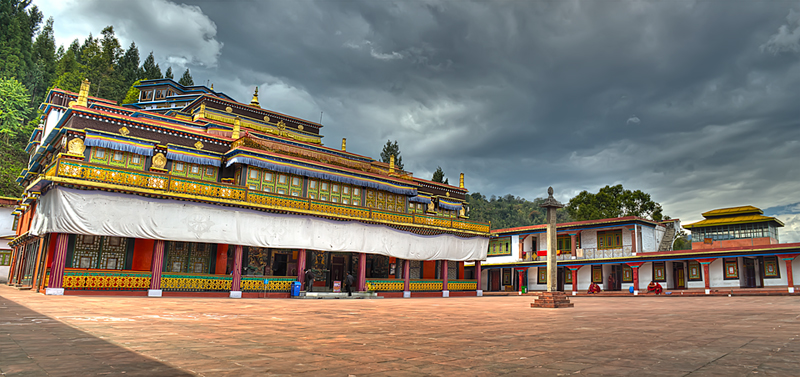
The Rumtek Monastery in Gangtok, Sikkim.
Image source: Wikimedia commons
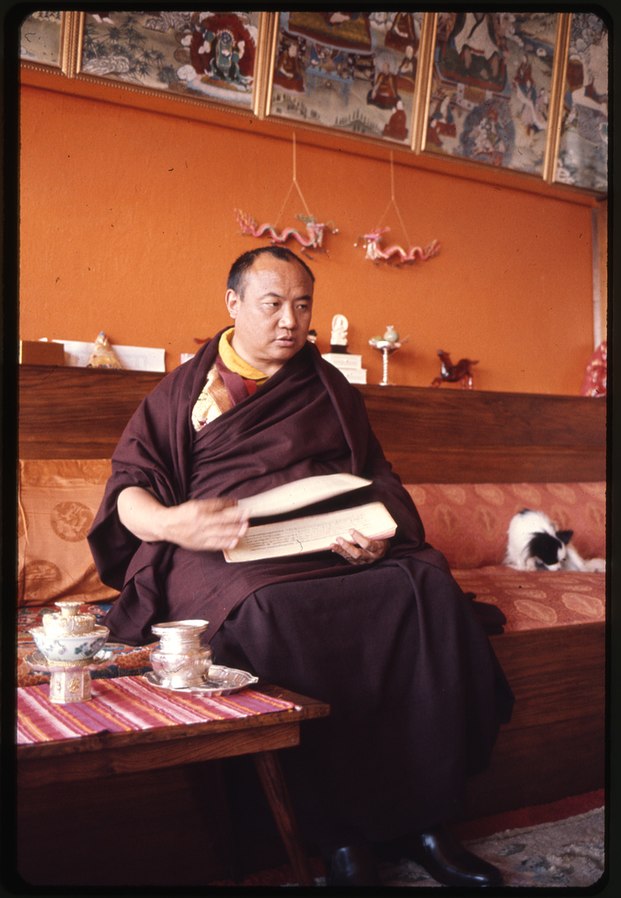
Rangjung Rigpe Dorje, His Holiness the 16th Gyalwa Karmapa.
Image Source: Wikimedia Commons
The Rumtek Monastery was originally founded in 1734 by Wangchuk Dorje, the 9th Karmapa with the royal patronage of the then king, the fourth Chogyal Gyurmed Namgyal. Since then, the monastery functions as the principal seat of the Kagyu tradition in Sikkim. However, the site was almost in ruins when Rangjung Rigpe Dorje, His Holiness the 16th Gyalwa Karmapa had visited the place on a pilgrimage in the mid-1950s. Subsequently, after escaping from Tibet in 1959, he was welcomed in Bhutan where he took temporary asylum and negotiations ensued with the Indian government. Eventually, he moved to Sikkim with his entourage and decided to restore the Rumtek Monastery. The 11th Chogyal of Sikkim, Tashi Namgyal donated 74 acres of land at Rumtek as a gift to the 16th Karmapa for building and expanding the monastic complex. The then Indian Prime Minister, Jawaharlal Nehru, assured the workers that they would receive free clothing and food, while common people also contributed generously and played a crucial role in the initiative.
The construction work of the Rumtek monastery took four years before its completion. It was built in the traditional Tibetan style. In 1966, on the occasion of Losar (Tibetan New Year), Rangjung Rigpe Dorje, His Holiness the 16th Gyalwa Karmapa officially inaugurated the Dharma Chakra Centre which was to be a haven of spiritual accomplishment and the seat of the Karmapa. He further enriched the place with some of the rarest Buddhist artefacts, books, relics and statues, including the hundred and eight volumes canon of the Buddha's teachings that he had brought with him from Tibet.
Surrounded by mountains on all sides, the Rumtek monastery is one of the most significant Buddhist monasteries in India. It resembles the Tsurphu Monastery located in Tibet. The Rumtek Monastery comprises of two buildings. The Old Rumtek Gompa is located close to the new Dharma Chakra Centre. Originally known as the Karma Chokhor Thubten Ling, the exterior of the old gompa is painted in light blue and was conceptualised in the Sikkimese alpine style. The path leading upto the monastery is dotted with white prayer flags.
The new building of the monastery is three-storey high. The walls are decorated with elaborate sculptures and colourful murals that illustrate many facets of Buddhist mythology. Silk banners, thangkas (religious scroll paintings), and religious texts are also displayed on its walls. Moreover, the monastery boasts a magnificent prayer hall, where the resident lamas deliver lectures and teachings.
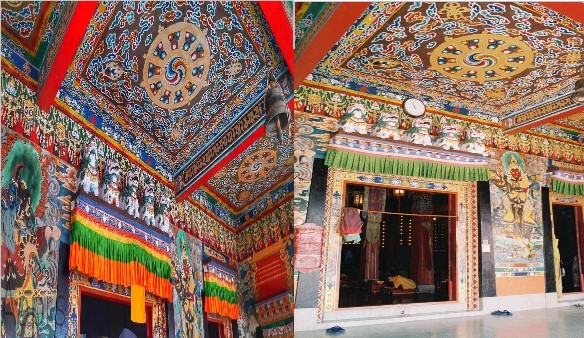
The embellished interiors of the Rumtek monastery.
Image Source: Wikimedia Commons.
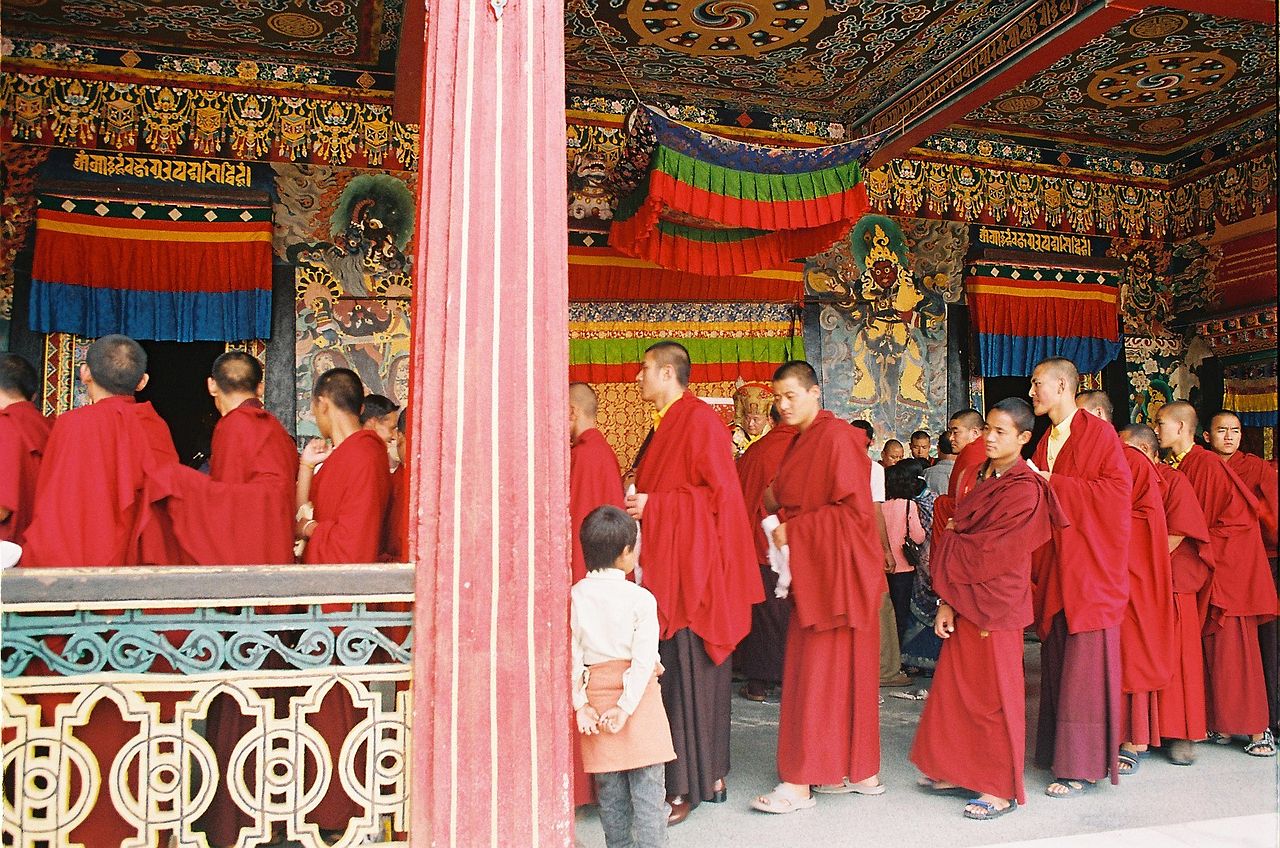
Students at the Rumtek Monastery.
Image source: Wikimedia commons
The Karma Shri Nalanda Institute for Higher Buddhist Studies (KSNI) was founded in 1981 by the 16th Gyalwa Karmapa at the Dharma Chakra Centre. He had envisioned it to be a monastic college or shedra. A significant proportion of the student body is formed by Tibetan refugees and students from India, Nepal and Bhutan. Due to their dire financial circumstances, the shedra provides free academic guidance, food, lodging and textbooks to qualified candidates who wish to pursue their education in monastic study. A ‘shastri’ degree is conferred upon a student after the completion of seven years of training under the full shedra program. This is equivalent to a Bachelor’s degree. A further ‘acharya’ degree is awarded after two more years of training and is equivalent to a Master’s degree in Buddhist Studies that is conferred by the Sampurnanand Sanskrit University.
As part of their religious practice, the Buddhist monks occasionally perform the Lama dance in the courtyard of the monastery. Above all, the spectacular golden stupa is the main attraction of Rumtek Monastery. This thirteen feet tall structure houses the relics of the 16th Karmapa and is an immensely revered symbol of spirituality. It is embellished with elaborate metalwork, while old turquoise and coral have been used for ornamentation.
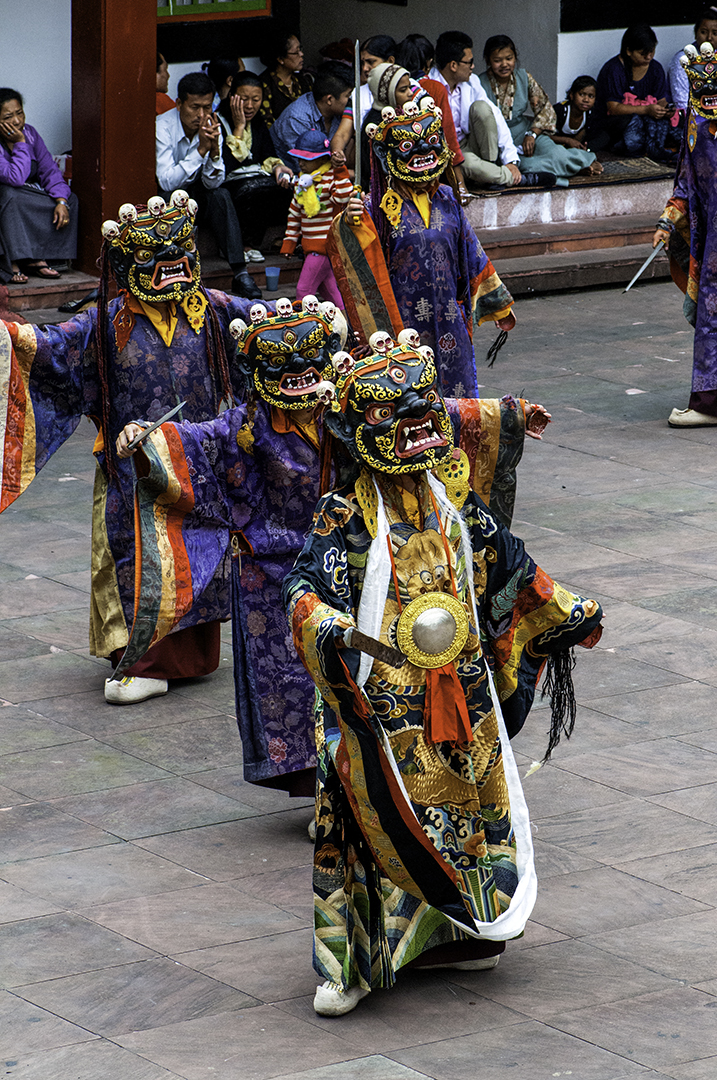
Mask Dance at Rumtek Monastery.
Image Source: Wikimedia Commons.
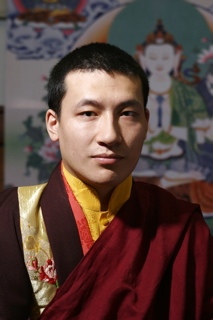
Thaye Dorje, His Holiness the 17th Gyalwa Karmapa.
Image source: Wikimedia commons
Nestled amidst the serene hills of Gangtok, the Rumtek monastery is a seat of the centuries old Kagyu tradition and a large number of visitors and devotees from across the world come to visit the monastery. As a pivotal centre for Buddhist practices and learning, the monastery celebrates the rich heritage of Buddhist thought and philosophy. To this day, the Rumtek Monastery continues to inspire seekers of enlightenment and embodies the enduring spirit of Tibetan Buddhism.
 Government of India
Government of India

 Recognizing the ongoing need to position itself for the digital future, Indian Culture is an initiative by the Ministry of Culture. A platform that hosts data of cultural relevance from various repositories and institutions all over India.
Recognizing the ongoing need to position itself for the digital future, Indian Culture is an initiative by the Ministry of Culture. A platform that hosts data of cultural relevance from various repositories and institutions all over India.